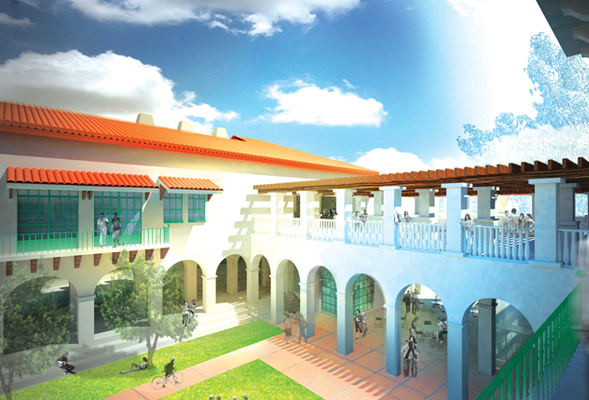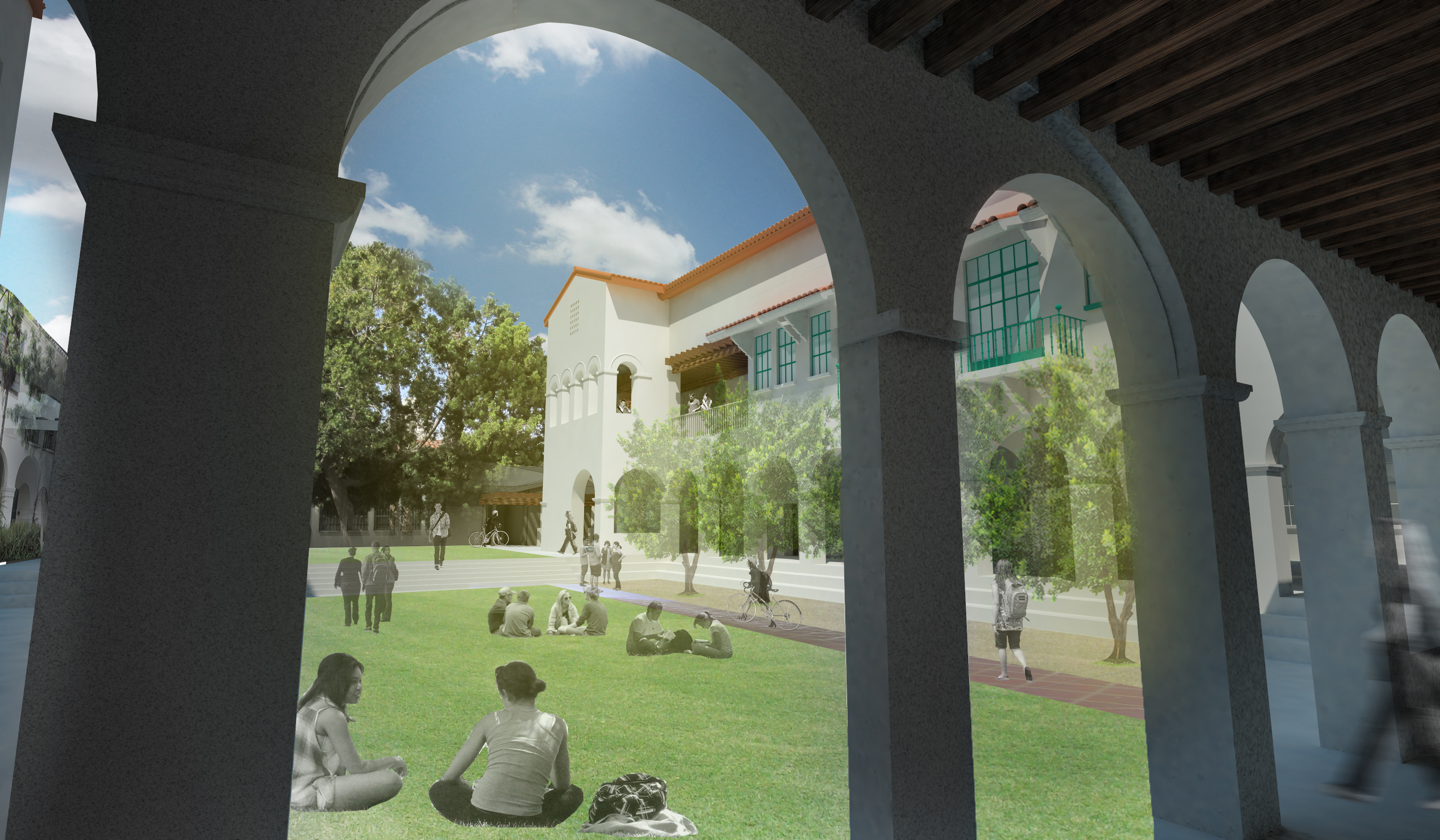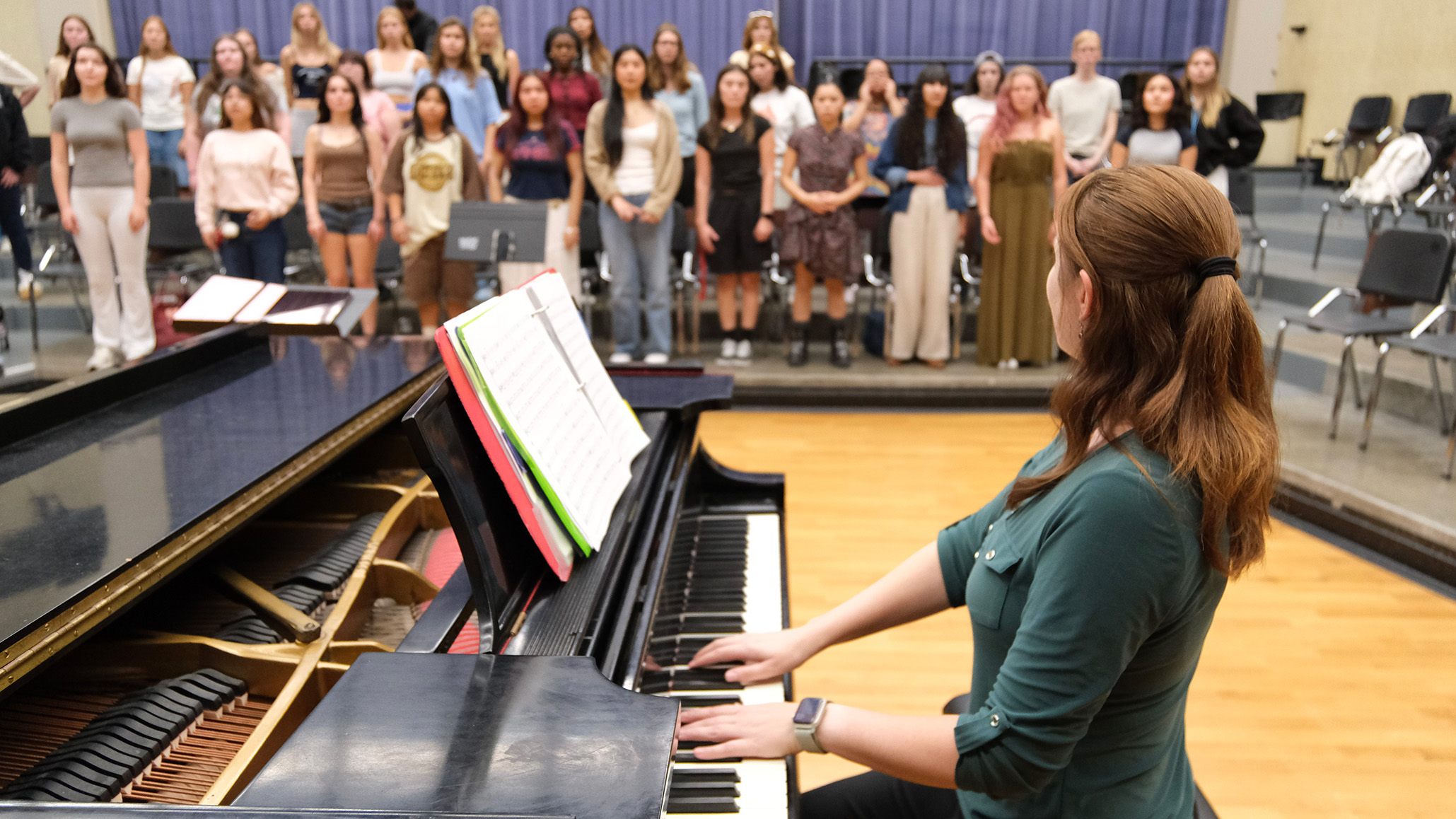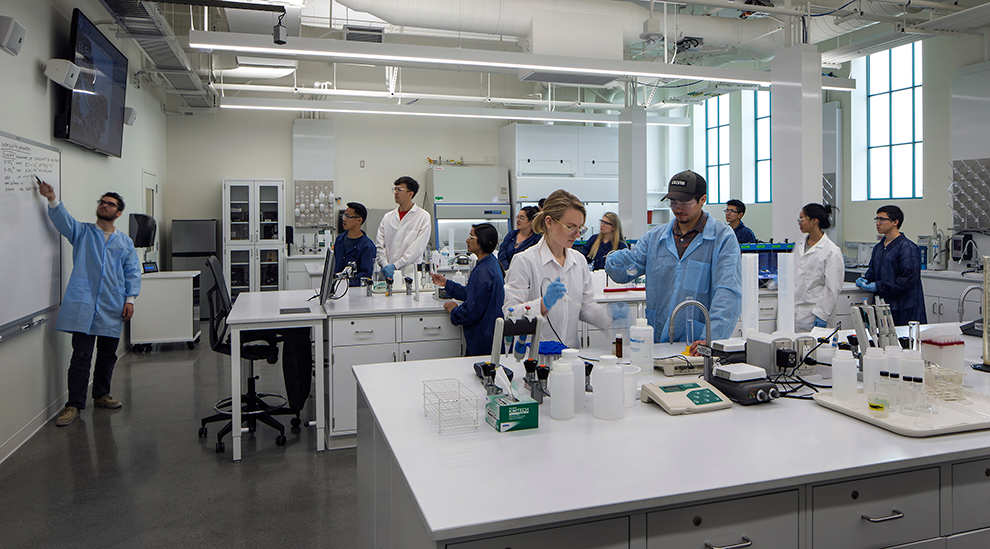Research Mission
The EIS Complex will feature modern labs in classic architecture.

“I hope it will feel like it’s always been there.”
This story appears in the summer 2015 issue of 360: The Magazine of San Diego State University.
While the scientists and engineers in San Diego State University’s new, state-of-the-art Engineering and Interdisciplinary Sciences Complex focus on the future, the complex’s architecture will reflect the university’s legacy.
“Ever since 2008 and 2009, when we began the design work on the Aztec Student Union, we recognized that the campus aesthetic is California Mission Revival architecture,” said Robert Schulz, associate vice president of operations and university architect. “It’s the iconic, historic campus that our alumni and students love.”
The California Mission Revival style draws on the modest yet functional designs of the state’s early adobe missions. Think Hepner Hall and Hardy Tower as the campus’s premier examples.
The style’s modern interpretation casts durable, cost-effective painted cement in place of large adobe blocks, but keeps the emphasis on white exteriors, regularly spaced small windows, tile roofs and modest decorative elements.
Resurrecting the California Mission Revival style for the new complex is actually a return to form for campus architecture, Schulz explained. A number of buildings built in the late 1960s and early ’70s — including the Industrial Technology building that the EIS Complex will replace — departed from SDSU’s original mission architecture. The resulting mishmash of styles wasn’t a good look for campus, Schulz said.
"We can do better"
“The early 1970s were kind of a dark period in SDSU’s architectural history,” he said. “When they put up new buildings during that time, they made no effort to make them fit with the existing campus. We think we can do much, much better.”
While the exterior design looks to the past for its inspiration, the new complex’s interior is dedicated to the needs of future scientists and engineers, Schulz said. The complex’s interior space will introduce much more instructional, laboratory and collaborative space than in the present Industrial Technology building.
Outside, the Thomas B. Day Quad — named to honor SDSU’s sixth president — will provide space for students to lounge and researchers to discuss their latest projects while sitting in garden spaces that ring around the quad.
The designers want to foster the kinds of novel innovations that emerge when scientists, mathematicians and engineers can see one another working and easily bounce around ideas in common spaces and coffee shops.
State of the art
In terms of technological capacity, the EIS Complex will house state-of-the-art scientific and industrial machines. Because many of these machines require extremely precise calibration and can be affected by vibration and ground movement, the structure is designed to be “really stiff, solid, and immobile,” Schulz said.

The lowest level will house an MRI machine, which won’t sit on foundation, but instead on a concrete slab isolated from the structure, offering maximum protection to this ultrasensitive equipment.
As with the Aztec Student Union, the EIS Complex designers are also keeping environmental concerns in mind. Schulz said they will seek LEED Certification for the complex.
When it’s all finished and the scientists and engineers are hard at work within, Schulz wants people to marvel at how they managed to fit cutting-edge equipment and technology into such an old piece of campus.
“I hope it will feel like it’s always been there,” he said. “If people see it and make that mistake, I’d be very happy.”



